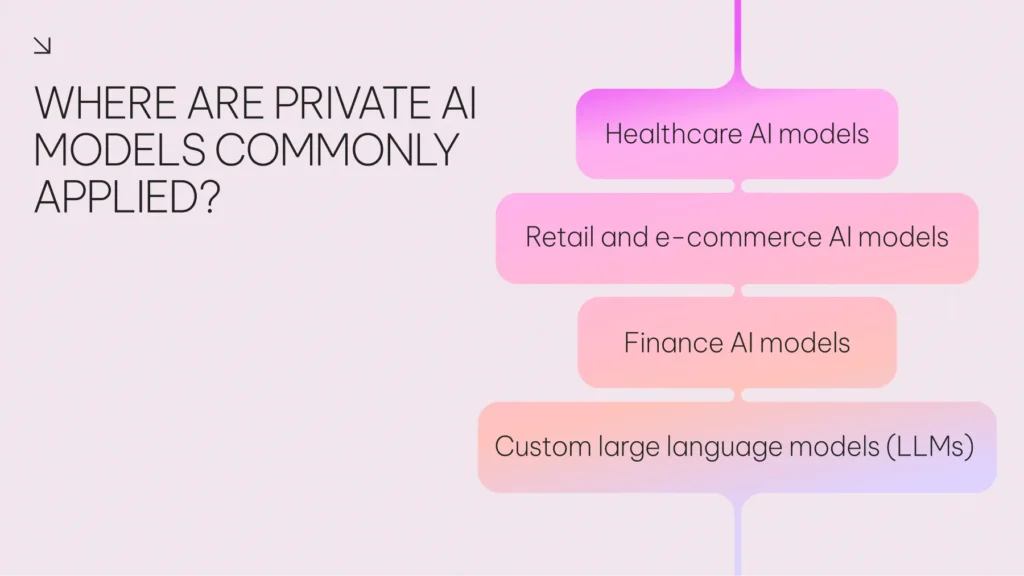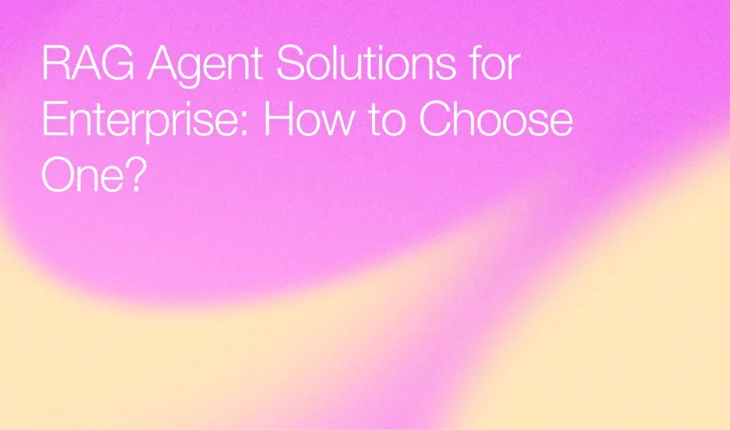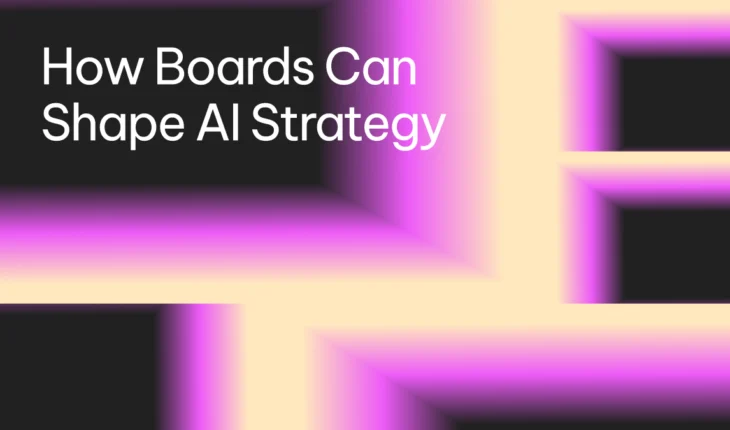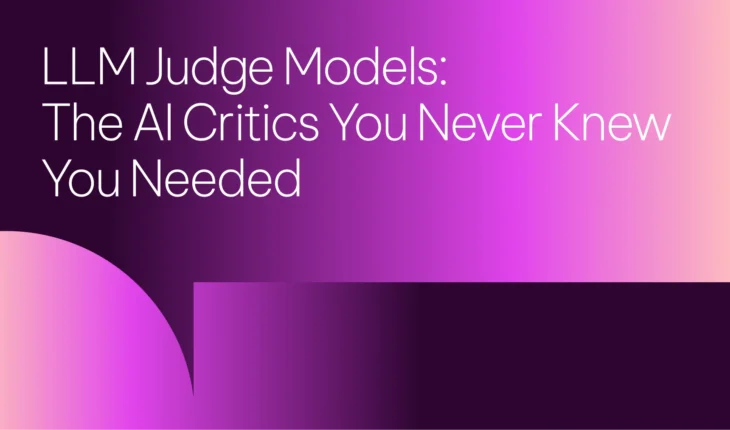Table of Contents

Private AI Models: Definition, Features & Applications
Many of today’s large language models (LLMs) are built on public infrastructure and trained using open web data, leaving enterprise leaders exposed to security gaps, intellectual property leaks, and regulatory violations.
These risks aren’t theoretical. A 2024 IBM report found that 51% of IT leaders have delayed or downsized AI initiatives due to data privacy concerns. With increasing pressure to move fast while staying compliant, enterprises face a serious trade-off: unlock AI’s full potential or maintain control and confidentiality.
Private AI models resolve this tension. These systems are built, owned, and operated by the organization itself, trained on proprietary data within secure, dedicated environments. They utilize privacy-preserving techniques, such as federated learning (which trains models without sharing any raw data) and advanced encryption, to safeguard sensitive information throughout the AI lifecycle.
In this article, we’ll explore what private AI models are, where they offer the most value, and what to consider before investing.
What are private AI models?
Private AI models are enterprise-owned systems designed to provide organizations with full control over how artificial intelligence is developed, deployed, and utilized. Unlike public AI models, which are typically trained on broad internet data and hosted by third-party providers, private AI models are trained on proprietary datasets within secure, isolated environments.
These models rely on privacy-preserving techniques, such as federated learning (where algorithms are trained across decentralized data sources without moving the data itself) and end-to-end encryption, to ensure that sensitive information is never exposed during processing. This makes them especially valuable for industries with strict regulatory and compliance requirements, such as healthcare, finance, and government.
Private AI enables companies to align model behavior with domain-specific goals, improve data relevance, and reduce the risks associated with data leakage, vendor lock-in, or compliance failures. While implementing private AI demands more investment in infrastructure, governance, and talent, it delivers long-term gains in security, transparency, and strategic autonomy.
Why do enterprises use private AI models?
Enterprises adopt private AI models to protect sensitive information, meet regulatory requirements, and maintain strategic control over their AI capabilities. These models are trained on internal data, enabling secure, high-precision applications such as fraud detection, real-time customer support, document summarization, and risk analysis, all tailored to the organization’s specific context.
Running AI models in-house offers significant operational advantages. It reduces latency, avoids third-party data transfer costs, and provides greater control over performance optimization. Unlike public models, which may generate inconsistent or irrelevant outputs, private AI can be closely monitored and fine-tuned to minimize hallucinations and protect brand integrity.
Private AI is especially valuable in high-stakes environments such as healthcare, finance, and retail, where data privacy, compliance, and accuracy are non-negotiable.
What are the key features of private AI models?
Private AI models provide a secure, enterprise-controlled foundation for deploying artificial intelligence at scale. Unlike public models, they are developed and run entirely within an organization’s infrastructure, ensuring that sensitive data never leaves the business environment.
Trained on proprietary, high-value datasets
Private AI models are trained on proprietary datasets, meaning organizations maintain complete control over how their data is accessed, processed, and protected. This closed-loop setup ensures intellectual property stays in-house and eliminates the risks associated with using public training pipelines.
For example, a financial institution might train a private model on decades of credit history and loan performance to generate highly accurate, regulation-compliant risk assessments. In doing so, they not only improve model performance but also gain a strategic edge, using their own high-quality data to develop AI solutions that competitors cannot replicate.
Private deployment with no external exposure
Private AI models are also deployed within fully controlled environments, ensuring that all data, training, and inference remain isolated from external systems. This architecture safeguards sensitive information and intellectual property by preventing unauthorized access, minimizing the risk of data leaks, and ensuring strict data governance.
For enterprises operating under regulatory frameworks like GDPR, HIPAA, or industry-specific compliance mandates, private deployment provides full visibility into where data is stored, who can access it, and how it is processed.
Plus, by keeping model operations on-premises or within private cloud infrastructure, organizations reduce latency, avoid data egress costs, and achieve tighter integration with existing systems.
Fine-tuned for specific tasks
One of the most powerful advantages of private AI is the ability to fine-tune models for highly specific use cases.
Enterprises can adapt large models using techniques like transfer learning – retraining a model on proprietary data – and retrieval-augmented generation (RAG) – retrieving documents before generating a response – to address domain-specific needs, allowing the model to reflect an organization’s internal language, decision logic, and workflows.
This process enables models to be suitable for detecting financial fraud, analyzing legal contracts, or forecasting supply chain disruptions.
Where are private AI models commonly applied?
Private AI models are commonly applied in industries that handle sensitive data and require strong privacy controls, such as healthcare, finance, retail, legal services, and government.

Healthcare AI models
Healthcare organizations use private AI models to drive innovation while safeguarding patient privacy and complying with regulations like HIPAA. Research institutions run models in Virtual Private Clouds (VPCs), enabling them to test AI on anonymized or synthetic datasets within secure environments.
For example, hospitals leverage federated learning to collaborate on diagnostic models, such as cancer detection, without ever exchanging patient records. Private AI in healthcare ensures that patient safety, regulatory compliance, and innovation are advanced in parallel.
Retail and e-commerce AI models
Retail and e-commerce enterprises use private AI models to deliver personalized customer experiences while safeguarding consumer data and ensuring regulatory compliance when processing large volumes of behavioral and transactional data.
For example, on-device AI can generate real-time product recommendations directly on the customer’s device, eliminating the need to transmit browsing or purchase history to external servers.
In physical stores, edge AI processes video and sensor inputs locally to analyze foot traffic patterns, optimize store layouts, and enhance in-store engagement, all without sending data to the cloud.
Finance AI models
Private AI models enable institutions to innovate securely, enhancing fraud detection, credit scoring, and customer engagement without compromising sensitive data or violating regulatory frameworks.
Banks deploy AI models within secure infrastructure to monitor transaction patterns and flag suspicious behavior in real time, ensuring that customer and transaction data never leave their controlled environment. For credit scoring, secure multi-party computation enables institutions to assess borrower risk using encrypted data from multiple financial sources, all without revealing or transferring raw data between entities.
Custom large language models (LLMs)
Enterprises are increasingly building custom large language models (LLMs) tailored to their industry-specific workflows, terminology, and regulatory environments. These models are trained on proprietary data, enabling more accurate, secure, and context-aware outputs than general-purpose public models.
These domain-specific models also deliver higher accuracy, operational relevance, and privacy than public AI, ensuring insights remain secure while being grounded in the right data.
How do private AI models preserve privacy?
Private AI models preserve privacy by ensuring that data remains within controlled environments, never leaving the organization’s infrastructure.
They use a combination of architectural decisions and privacy-preserving techniques to prevent exposure of sensitive information, even during training and inference.
Key methods include:
Federated learning
Federated learning allows AI models to be trained across decentralized data sources, such as hospitals, financial institutions, or remote devices, without transferring raw data to a central server. Each participant trains the model locally, and only the updated parameters are shared with the central system. This ensures data stays at the source, reducing exposure and supporting regulatory compliance.
Differential privacy
Differential privacy enhances data protection by introducing statistical noise into datasets or model outputs. This technique ensures that the contribution of any individual data point is indistinguishable, making it nearly impossible to reverse-engineer or isolate personal information, even with full access to the results.
Homomorphic encryption
Homomorphic encryption enables computations to be performed directly on encrypted data, allowing AI models to learn and make predictions without ever accessing the underlying information. This is especially valuable for processing highly sensitive data, such as health or financial records, in collaborative or multi-party environments.
Trusted execution environments (TEEs)
Trusted Execution Environments (TEEs) are isolated, hardware-based environments within a device’s processor that protect both data and code during execution. When information enters a TEE, it is decrypted, processed securely, and then re-encrypted before leaving, ensuring that even system administrators or attackers cannot access the data during processing.
On-device AI (Edge AI)
Edge AI processes data locally on the device where it is generated, such as a smartphone, sensor, or point-of-sale terminal. This approach minimizes unnecessary data transmission to external servers, reducing the risk of interception, data leakage, or compliance violations while enhancing responsiveness and resilience.
Choosing the right private AI model
Selecting the right private AI model requires a careful evaluation of both technical performance and business alignment. Enterprises should assess each model based on core capabilities such as context window size, hallucination rate, ease of fine-tuning, and deployment flexibility, especially when handling sensitive data or operating under strict regulatory oversight.
In high-stakes sectors such as healthcare, finance, or retail, it’s also crucial to consider the availability of enterprise-grade support. Vendor maturity, documentation quality, and integration assistance can all impact time to deployment and long-term scalability.
Once private deployment is confirmed as the right path, organizations should benchmark available models across key dimensions, including cost, latency, inference speed, accuracy, and compatibility with existing systems, to ensure the chosen model aligns with the most desired strategic goals.


